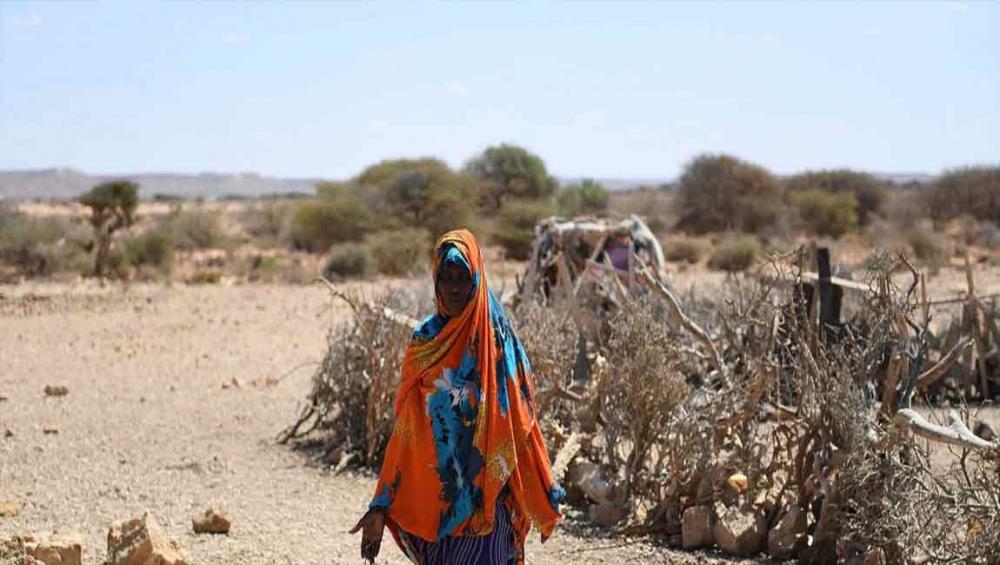Just Earth News | @JustEarthNews | 19 Feb 2018

Ilyas Ahmed
New York, Feb 19 (JEN): The top United Nations humanitarian official in Somalia has commended the drought relief and recovery efforts of the authorities in the northern state of Puntland, while cautioning that the current humanitarian crisis is far from over.
“We took stock, together with [Puntland’s] leadership, of the drought response as it has been so far, looking back to what has been a good year in terms of close cooperation and a very successful drought relief effort,” the UN’s Humanitarian Coordinator for Somalia, Peter de Clercq, said in Puntland’s capital, Garowe, on Saturday, in the wake of a series of meeting with officials, including the Federal Member State’s President Abdiwali Mohamed Ali.
“At the same time, we talked about the remaining challenges because we are not out of the woods yet by any stretch of the imagination,” he added.
Mr. de Clercq – who also serves as the Secretary-General’s Deputy Special Representative for Somalia and the UN Resident Coordinator – was visiting Puntland to meet with security, planning and humanitarian officials from the local government, as well as representatives of civil society organizations, to discuss the current drought response and other challenges in the region.
Speaking on the collective response so far to the drought that has affected Puntland and the rest of Somalia for over five failed rain cycles, Mr. de Clercq said that, while 2017 was a good year in terms of close cooperation to avoid the worst impact of the drought, further effort would be needed.
He added that, in areas like Sool and Sanaag, there are still massive needs and a strong possibility that famine-type conditions would develop. The two areas, located on the north-eastern tip of the Horn of Africa, form part of a disputed region claimed by both Puntland and neighbouring ‘Somaliland.’
Mitigating the effects of the drought and helping the people who have been displaced by it was one of the main topics covered in the UN official’s meeting with President Mohamed Ali. “Our discussion was frank and candid, very fruitful,” the President noted afterwards.
Peter de Clercq, the Deputy Special Representative of the UN Secretary-General for Somalia and UN Resident Humanitarian Coordinator accompanied by officials from the UN and Puntland administration interacts with residents of drought-hit Salaxley village., by UN Photo/Ilyas Ahmed
At the end of the visit, which included discussions at the ministries of security and planning, together with Puntland’s disaster management agency, Mr. de Clercq said that it was important to get the right resources to the right place and work with the right partners, such as the Puntland authorities, and to consider longer-term factors.
“We try to address the underlying causes of the crisis, like food insecurity and livestock depletion, and to think of alternatives for people to make a living and to rebuild their lives,” he said.
In 2017, drought-related famine was averted through the efforts of Somalis and their international partners. However, the risk is not yet overcome as there are 5.4 million people in Somalia needing life-saving humanitarian assistance. Work is being done in all regions, including Puntland, to build and sustain resilience in all communities, especially the populations affected the most by the recurring cycle of drought and famine risk, such as pastoralists, displaced persons and fishing communities.
There is a resilience and recovery framework in Somalia, to help it transition from humanitarian intervention to sustainable recovery and disaster preparedness. Led by the authorities and supported by the United Nations and the World Bank, it is tightly linked to its development plan. It enables the national and regional governments to take the lead in medium- and long-term developments solutions, going to the root of communities’ vulnerability to droughts, and helping them withstand recurrent shocks.